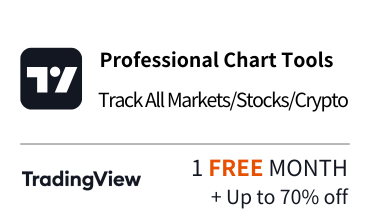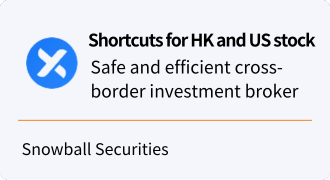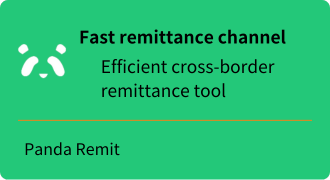US Stock ETF Investing: Guide to Benefits and Smart Buying Strategies
[DISCLAIMER] This article is for educational and informational purposes only and does not constitute investment advice. Readers should consult with qualified financial professionals before making any investment decisions.
As an experienced quantitative trading and finance professional, I am often asked questions about U.S. stock ETFs (Exchange Traded Funds). Today, I will provide you with detailed answers to the questions “How to buy U.S. stock ETFs? Why buy U.S. ETFs, what are the advantages of U.S. ETFs, and what is an ETF? What is an ETF?”. Whether you are new to U.S. stock investing or an intermediate investor looking to optimize your portfolio, this article will provide you with valuable insights and practical advice.
Ⅰ. What is an ETF?
ETF, the full name is Exchange Traded Fund, which translates to exchange-traded fund in Chinese. Simply put, an ETF is a fund product that is listed and traded on a stock exchange, which combines the advantages of open-end and closed-end funds.
In the U.S. stock market, ETFs usually track a specific index, such as the Standard & Poor's 500 Index (S&P 500) or the NASDAQ-100 Index (NASDAQ-100). This means that when you buy a U.S. stock ETF, you are actually buying a basket of U.S. stocks that have the same or very close composition to the index the ETF tracks.
Interestingly, ETFs were born out of a financial crisis in the U.S. On October 19, 1987, the stock market crash known as “Black Monday” made Wall Street realize that it needed a new investment tool to deal with the volatility of the market. In the aftermath of the storm, a former physicist named Nathan Most led a team to develop the first ETF, the SPDR S&P 500 ETF Trust (ticker symbol: SPY), which was listed on January 22, 1993 on the American Stock Exchange. Moster once humorously said, “If you have a great idea and no one understands it, you're probably about to get rich.” As it turns out, he did get rich, and ETFs have revolutionized the global investment landscape.
Ⅱ. Why buy a U.S. stock ETF and what are the advantages of a U.S. stock ETF?
- Diversification of Investment Risk
By purchasing an ETF such as SPY (which tracks the S&P 500) or QQQ (which tracks the Nasdaq 100), you can invest in hundreds of top U.S. companies at one time, effectively diversifying the risk of a single stock. This is especially beneficial for investors with limited funds or those who don't want to spend a lot of time researching individual stocks. - Low Cost
Compared to actively managed funds, U.S. stock ETFs usually have lower management fees. For example, the famous Vanguard S&P 500 ETF (VOO) has an annual fee rate of only 0.03%, which means that for every $10,000 invested, you only need to pay $3 per year in management fees. - Highly Liquid
U.S. stock ETFs are listed on exchanges such as the New York Stock Exchange or NASDAQ, and can be bought and sold at any time like stocks, making them highly liquid. For example, the average daily trading volume of SPY often exceeds 10 million shares, which means you can move in and out of the market at any time during trading hours with great flexibility. - Highly Transparent
Most U.S. stock ETFs publish their positions daily, so you know exactly what you're investing in. For example, you can check the detailed position information of its ETF products on the official website of iShares (BlackRock's ETF brand). - Tax Efficiency
Due to the passive management nature of ETFs, their portfolios move less frequently and therefore incur relatively less capital gains tax. This is particularly favorable under U.S. tax law as it helps investors to defer tax payments. - Diversification Options
There are various types of ETFs available in the U.S. stock market, covering different sectors, regions and asset classes. For example, you can invest in tech stock ETFs (e.g., XLK), emerging market ETFs (e.g., EEM), or even bitcoin ETFs (e.g., BITO).
Ⅲ. How do I buy a U.S. stock ETF?
- Open a U.S. stock trading account
First of all, you need to open an account with a brokerage firm that provides U.S. stock trading services. You can choose from US stock brokerage firms such as Interactive Brokers, Snowball, or international brokerage firms that offer US stock trading. - Funding Preparation
Make sure you have enough US dollar funds in your trading account. Most brokerage firms offer exchange services where you can convert your local currency into US dollars. - Choosing the right ETF
Choose the right U.S. stock ETF based on your investment objectives and risk tolerance. consider the following factors:- Index or sector tracked (e.g. S&P 500, NASDAQ 100, specific sectors, etc.)
- Historical performance
- Expense ratio (the lower the better)
- Size and liquidity (usually the larger the size, the better the liquidity)
- Place an order to buy
Using your trading software or platform, enter the ticker symbol of the ETF (e.g. SPY, VOO, QQQ, etc.), select “Buy”, and then enter the quantity you want to buy and the price (market price or limit price). - Long-term hold, regular check
ETFs are good for long-term holding, but it's important to check your portfolio periodically to make sure it still meets your investment objectives.
Ⅳ. U.S. Stock ETF Investment Strategies
- Fixed Investment Strategy
Regular fixed investment (referred to as fixed investment) is a good way to invest in ETFs. For example, you can invest a fixed amount of $500 per month into SPY, which can smooth out market volatility and reduce timing risk. - Core Satellite Strategy
Use a broad-based index ETF such as SPY or VOO as the core of your portfolio, along with some sector ETFs (e.g., XLK, a technology stock ETF) or thematic ETFs (e.g., ICLN, a clean energy ETF) as satellites to boost potential returns. - Risk management
Moderate diversification into different types of ETFs, such as stock ETFs, bond ETFs (e.g. AGG), commodity ETFs (e.g. GLD), etc., to minimize overall investment risk. - Rebalancing
Regularly review and adjust your ETF portfolio to ensure that the allocation ratio of each asset class is in line with your investment strategy. For example, compare quarterly or annually whether it deviates from your set asset allocation and adjust accordingly.
Ⅴ. Notes
- Understand the tracking error of ETFs
Tracking error is the degree of deviation between the actual performance of an ETF and the index it tracks. For example, VOO and SPY both track the S&P 500 Index, but their tracking error may be slightly different. - Pay attention to the liquidity of the ETF
ETFs with higher trading volume are usually easier to buy and sell, and the bid-ask spread is smaller, which helps to reduce trading costs. For example, SPY and QQQ are both highly liquid ETFs. - Focus on the Total Expense Ratio (TER)** of an ETF
The Total Expense Ratio (TER) includes various fees such as management fee and custodian fee, which directly affects your investment return. For example, VOO has an expense ratio of 0.03% while its competitor, SPY, has an expense ratio of 0.09%, a difference that could have a significant impact over the long term. - Understanding the Trading Mechanisms of ETFs
The price of an ETF may slightly deviate from its NAV. Understanding the pricing mechanism and arbitrage mechanism of an ETF will help you better time your buying and selling. Especially during the opening and closing of the U.S. stock market, the price of ETFs may fluctuate significantly.
Ⅵ. Conclusion
As an investment tool that combines flexibility, transparency and low-cost advantages, U.S. stock ETFs provide global investors with a convenient way to access the U.S. capital market. Through the introduction of this article, I believe you have gained a deeper understanding of U.S. stock ETFs. Remember, while investing in ETFs is relatively simple, it still requires caution and wisdom. It is recommended that you:
- choose a suitable U.S. stock ETF based on your risk tolerance and investment objectives.
- adopt a fixed-investment strategy to minimize the risks associated with market volatility.
- Review and rebalance your ETF portfolio regularly.
- Keep learning, and continue to pay attention to U.S. stock market dynamics and the development of ETF products.
In the future, as financial innovation continues to advance, I expect more innovative ETF products to emerge in the U.S. stock market, providing investors with richer choices. Whether you are just starting to explore U.S. stock ETF investing or already have some experience, I encourage you to continue to learn more and optimize your investment strategy.
Finally, I'd love to hear about your U.S. stock ETF investing experiences and tips. Do you have any unique ETF investment strategies? What challenges have you encountered during your ETF investing journey? Feel free to share your views and experiences in the comments section so we can learn and grow together!







